Test Bank for Textiles, 11/E 11th Edition Sara J. Kadolph
$35.00
Test Bank for Textiles, 11/E 11th Edition Sara J. Kadolph
All resources are in electronic format and can be downloaded from your account or email – How to Download. Payments will be processed instantly after checkout. Please note that all sales are final and non refundable. If you still have questions, find answers on our FAQ page or just send us an email at [email protected], we will respond as soon as possible.
Chapter 2 Product Development from a Textile Perspective
I. Product Development: the design and engineering of a product so that it has the desired
serviceability characteristics, appeals to the target market, can be made within an acceptable
time frame for a reasonable cost, and sold at a profit.
A. Helps determine product image, performance, appearance, and cost
B. Color and trend forecasting
C. Fabric presentation and information
D. Encompasses range of activities
E. Requires understanding of customers and consumers (target market)
F. Innovation
G. Product management
H. Understanding of textiles
I. Confinement: only one firm uses a color, pattern, or fabric
J. Assortment: a group of fabrics that share a commonality of design, structure, or color
II. Serviceability and the Consumer
A. Serviceability: the measure of a textile product’s ability to meet consumers’ needs.
1. Aesthetics: attractiveness or appearance of a textile product.
2. Durability: how the product withstands use; the length of time the product is
considered suitable for the use for which it was purchased.
3. Comfort & safety: how a textile product affects heat, air, and moisture transfer, the
way the body and textile product interact, and its ability to protect the body from harm.
4. Appearance retention: how product maintains its appearance during use and care.
5. Care; treatment required to maintain a textile product’s original appearance.
6. Environmental concerns: effect on the environment of the production, use, care, and
disposal of textiles and textile products.
7. Sustainability: describes practices and policies that reduce environmental pollution and
do not exploit people or natural resources in meeting the lifestyle needs of the present
without compromising the future.
8. Lifecycle impact: examines the way the production, use, care, and disposal of a
product affect the environment and the people involved with the product.
9. Cost: influenced by many factors, including price or amount paid to acquire, use,
maintain, and dispose of a product.
III. Performance: the manner in which a textile, textile component, or textile product responds
when something is done to it or when it is exposed to some element in the environment that
might adversely affect the textile.
A. Determined by the component within a textile product.
B. Fabric performance may be assessed by the fabric producer, the firm buying the fabric, or
an outside firm that specializes in assessing fabric performance.
C. Fabric performance analysis is voluntary, except for flammability of some products.
D. Assessed following standard industry procedures
E. Company specs assure that products meet target market’s performance expectations.
F. Product quality may refer to the sum total of product characteristics such as appearance
appropriateness for end use, performance of materials, consistency among identical
products, and freedom from defects in construction or materials.
IV. Information Sources
A. Print sources: textbooks, technical journals, industry and trade publications.
B. Electronic sources: Web sites by trade associations, government agencies, universities,
and companies.
TEACHING ACTIVITIES
1. Ask a retail buyer, product manager, interior designer, apparel creative or technical designer,
entrepreneur, or other professional to discuss their work with the class.
2. As an assignment, select a general textile product and prioritize the serviceability concepts for
that product for two or more target markets. Predict the performance that the target markets
would expect for the product. Discuss how and why expectations might differ.
3. Bring in sample products and identify the kind of information that can be identified from
labels, hangtags, or the product. Discuss how the product would appeal to a different target
market if a different fiber, fabric, or finish had been used.
4. Ask students to visit two to five different stores and describe the target market for each store.
Require that they select one example textile product and describe how the product differs with
store type and target market.
5. Select an assortment of fabrics and distribute several to student groups. Have the students
group them by how they are alike (i.e., structure, weight, surface design, yarn type, and other
components) and have them explain their groupings. Ask them to use a different grouping
than before.
TEST QUESTIONS
Multiple Choice
Of the items listed here, which one is not considered a component of serviceability?
A. availability*
B. aesthetics
C. appearance retention
D. comfort
E. cost
Serviceability describes
A. how well a product meets consumers’ needs and expectations.*
B. how well a product fits within the allocated budget.
C. how durable a product is.
D. how well the product lives up to the company’s claims.
E. how satisfied the consumer is with the product based on its price.
A group of fabrics that share a commonality of design, structure, or color describe a/an
A. Confinement
B. Assortment *
C. Catalog
D. Quality
E. Bolt
A print pattern that is exclusive property of one design firms with restrictions so that printers
cannot sell the print to other companies describes
A. Consignment
B. Configurationi
C. Contact restrictions
D. Confinement*
E. Conscription
Product performance describes
A. how well a product sells when it is on the market.
B. how well a product carries over from one selling season to another.
C. the manner in which a textile product responds when something is done to it.*
D. the degree of satisfaction a consumer will have with a textile product.
E. the overall quality of a textile or textile product.
True/False
O There is only one best choice for any textile product need.
+ Textile knowledge provides the professional with the ability to make a more informed product
development decision.
+ Safety issues related to flammability apply to both apparel and interiors.
O Textiles should perform the same regardless of the target market for which it is intended.
O If you know the cost of the fabric and other materials used to produce a textile product, you
can determine the cost of the product to the consumer.
+ Sustainability issues address production, use, cleaning, and disposal of textile products.
Essay
Explain why there are so many choices in the marketplace for a textile product.
Define serviceability. Explain what that means in terms of product performance.
Describe how product performance is involved in the product development process.
Explain two sources of information and how a practicing professional might use them.
Select two dimensions of serviceability. Define each term and explain how these aspects might
affect consumer satisfaction with a textile product.
Be the first to review “Test Bank for Textiles, 11/E 11th Edition Sara J. Kadolph” Cancel reply
Related products
Test Bank



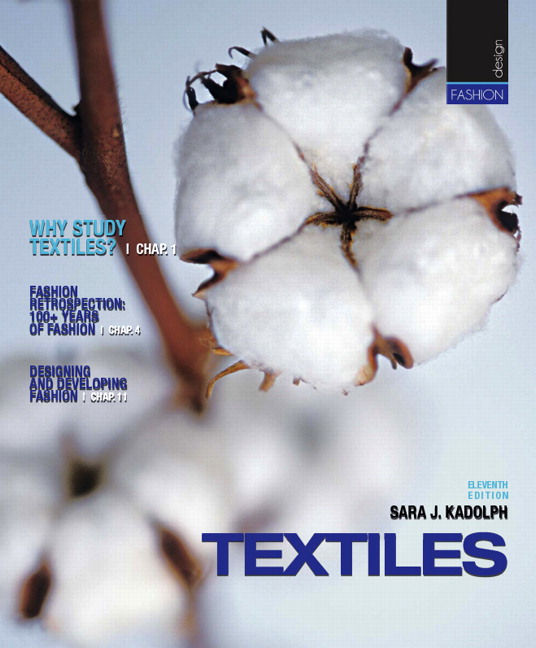
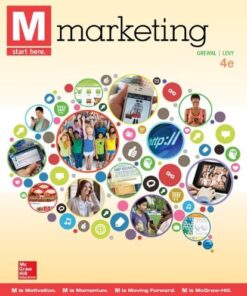
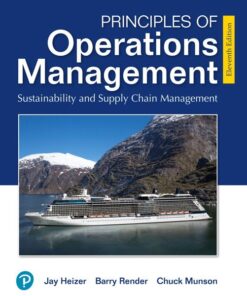

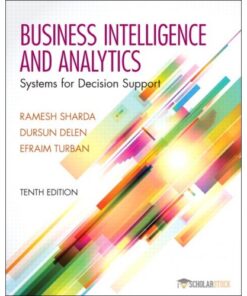
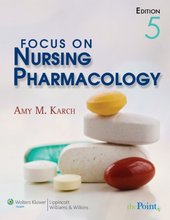
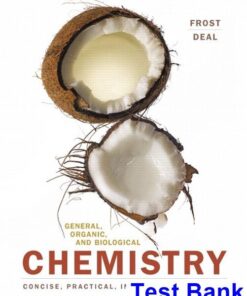

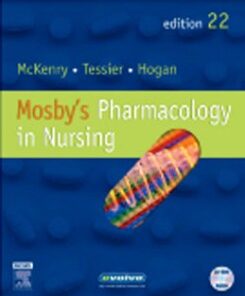
Reviews
There are no reviews yet.